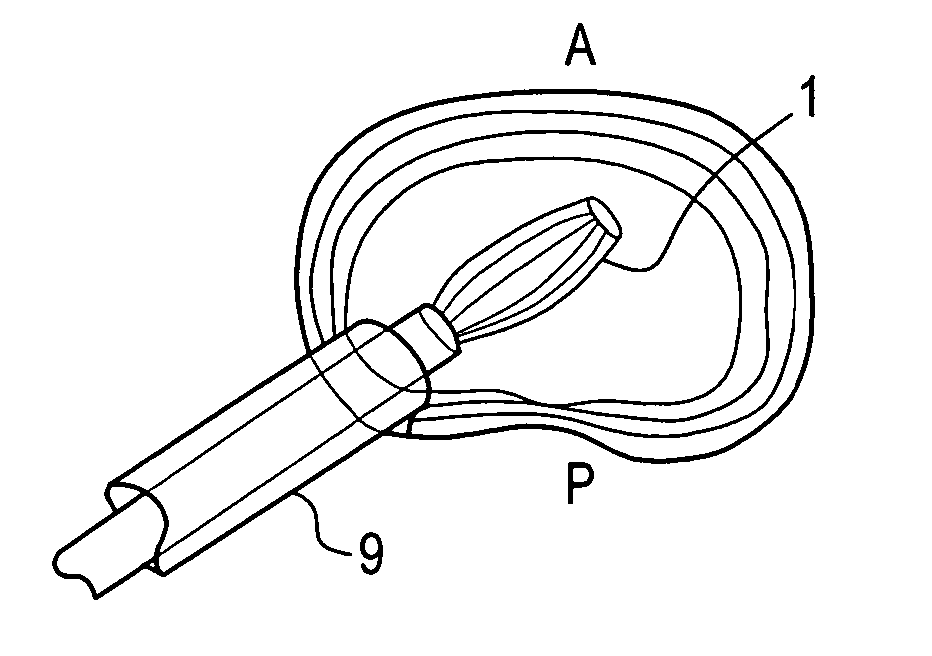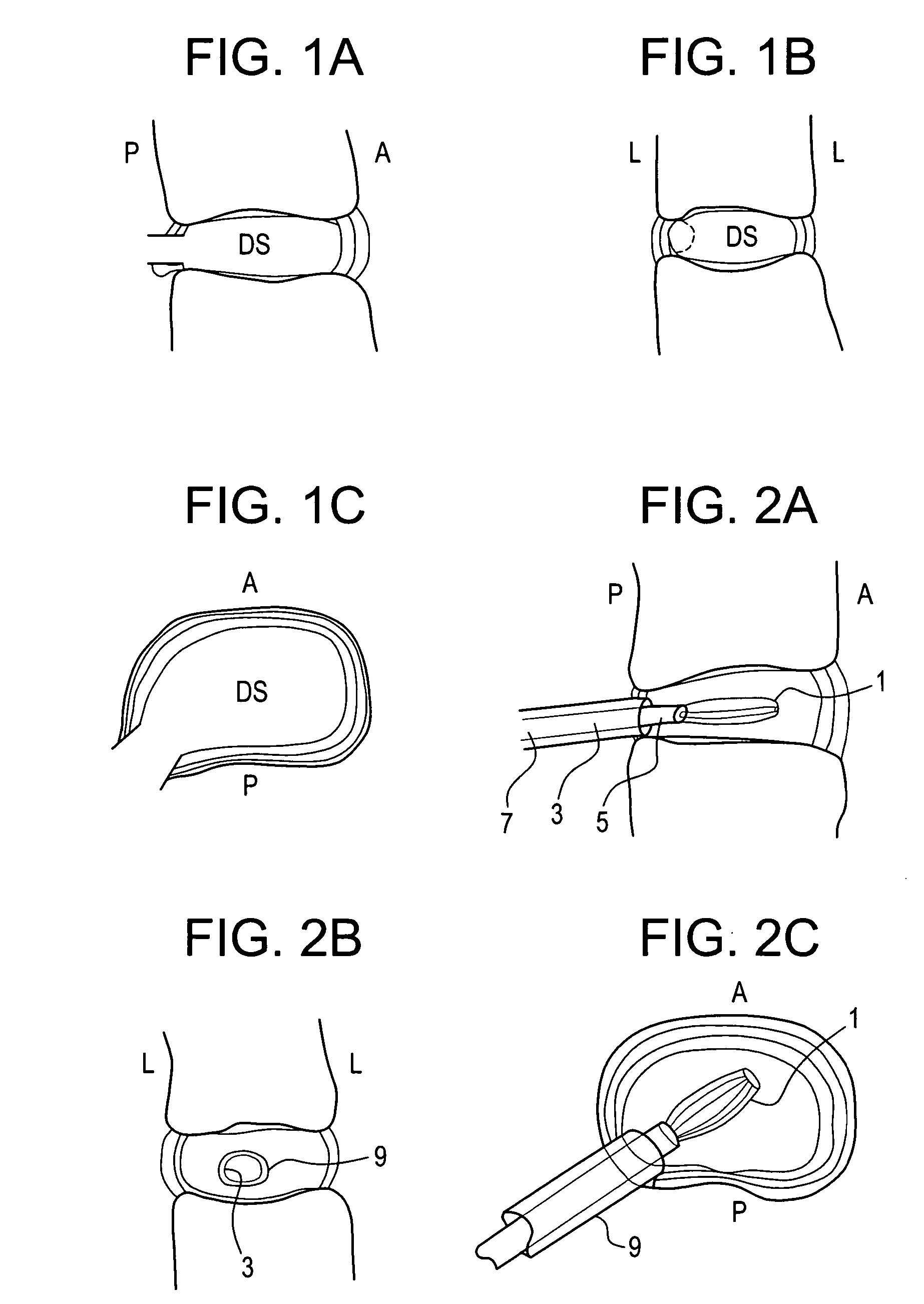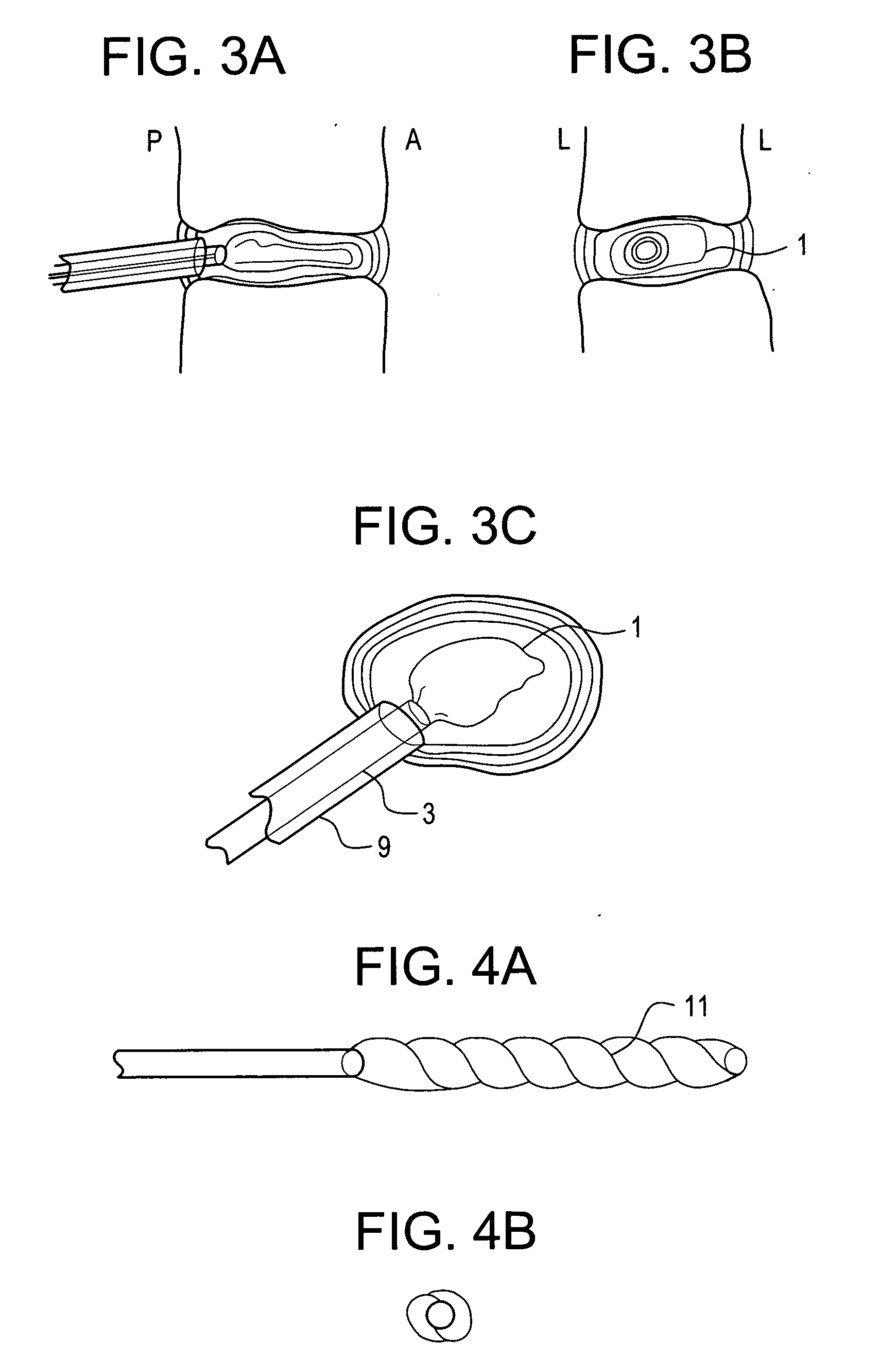Nucleus pulposus trial device and technique
a trial device and nucleus pulposus technology, applied in the field of nucleus pulposus trial device and technique, can solve the problems of high toxicity, retard the flow of nutrients into the disc, and the accumulation of toxins, so as to improve the determination of implant sizing and placement, improve the safety and effectiveness of procedures, and improve the effect of implant performan
- Summary
- Abstract
- Description
- Claims
- Application Information
AI Technical Summary
Benefits of technology
Problems solved by technology
Method used
Image
Examples
example
[0113] In performing a preferred prophetic method of the present invention, the patient is brought to the pre-surgical area and prepped. Anesthesia is then induced and the area of the spine is further prepped. A small incision through the muscles is opened under dissecting microscopic visualization. The incision is made as small as possible and is longitudinal in the plane of the spine. The paravertebral muscles are separated by blunt dissection and held apart with forceps and dividers. The intervertebral disc area is visualized, with initial exposure down to the lamina. The area below the lamina, at the point of the intervertebral foramina, can also be exposed.
[0114] The disc is examined for extruded material and any extruded material is removed. Magnetic resonance imaging (“MRI”) data can be used to determine the integrity of the annulus fibrosis at this point. An arthroscope is inserted into the disc and used to examine the inside of the annulus. Optionally, an intraoperative di...
PUM
| Property | Measurement | Unit |
|---|---|---|
| angle | aaaaa | aaaaa |
| angle | aaaaa | aaaaa |
| angle | aaaaa | aaaaa |
Abstract
Description
Claims
Application Information
 Login to View More
Login to View More - R&D
- Intellectual Property
- Life Sciences
- Materials
- Tech Scout
- Unparalleled Data Quality
- Higher Quality Content
- 60% Fewer Hallucinations
Browse by: Latest US Patents, China's latest patents, Technical Efficacy Thesaurus, Application Domain, Technology Topic, Popular Technical Reports.
© 2025 PatSnap. All rights reserved.Legal|Privacy policy|Modern Slavery Act Transparency Statement|Sitemap|About US| Contact US: help@patsnap.com



